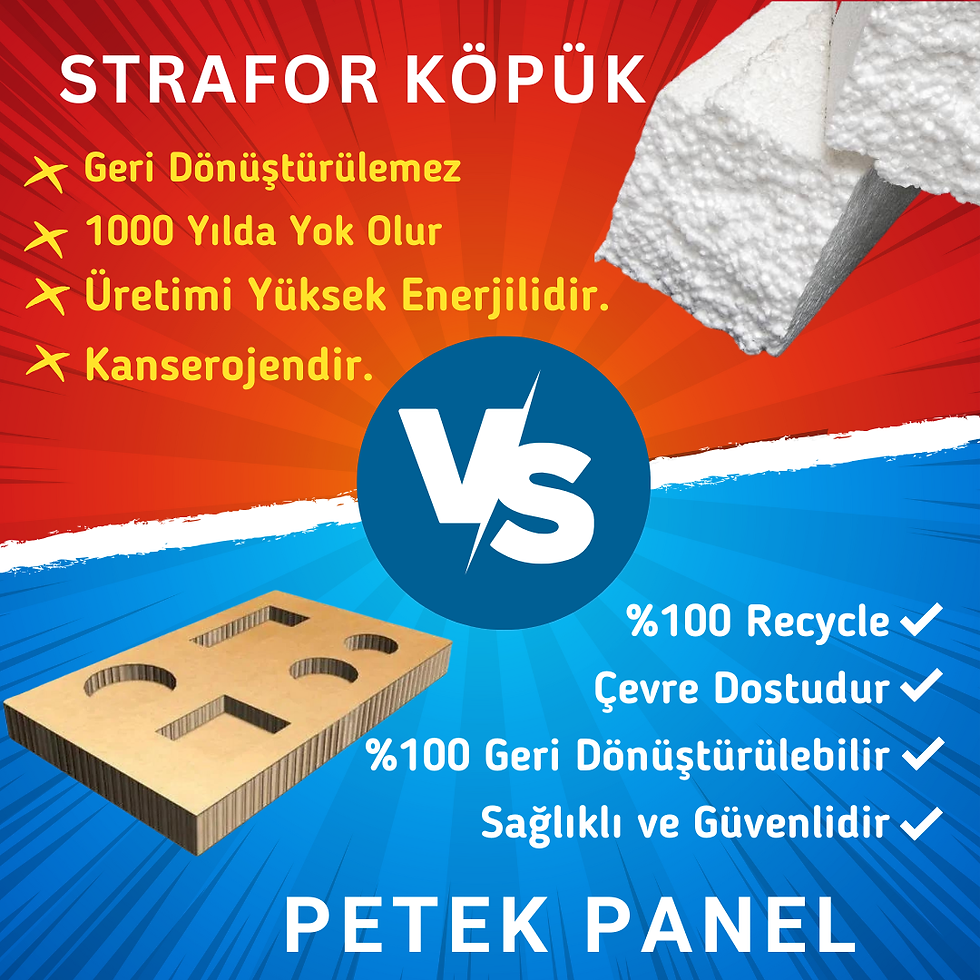The Necessity of Using Honeycomb Cardboard Instead of Styrofoam: A Step Towards Sustainable Packaging
- Arpack Ambalaj
- Aug 6, 2024
- 2 min read

In today's world, the rise of e-commerce and increasing consumer habits have led to a rise in the amount of materials used in in-box product protection and packaging. Although styrofoam, widely used in this field for many years due to its low cost and light weight, is preferred, it is criticized for its environmental impact. In line with the EU's sustainability goals and zero-carbon target, the use of eco-friendly alternatives such as honeycomb cardboard instead of styrofoam is becoming increasingly important.
Environmental Impact of Styrofoam:
Styrofoam is made from polystyrene, a petroleum-based plastic, and takes hundreds of years to decompose in nature. It emits harmful gases during production and is very difficult to recycle. Additionally, it poses a serious threat to marine life by contaminating seas and oceans.
Advantages of Honeycomb Cardboard:
Honeycomb cardboard is a light and durable material made from recycled paper. It has several advantages over styrofoam:
Eco-Friendly: Made from recycled materials and can be recycled again, it has a low environmental impact.
Biodegradable: As a material that can decompose in nature, it does not create a waste problem.
Light and Durable: As light as styrofoam but more durable, it provides better protection for products.
Flexible Design: Can be produced in different sizes and shapes, making it suitable for packaging various products.
Better Brand Image: Using an eco-friendly material demonstrates a brand's commitment to sustainability and creates a positive brand image.
EU Sustainability Goals and Honeycomb Cardboard:
The European Union has set a target to be carbon neutral by 2050. To achieve this goal, sustainable practices must be widespread in all sectors. The packaging sector is also affected by this transformation, and the use of eco-friendly materials is being promoted. Honeycomb cardboard stands out as an ideal alternative to styrofoam in line with the EU's sustainability goals.
Statistics:
Approximately 25 million tons of plastic waste is produced annually in Europe, with a significant portion coming from packaging materials. (Source: European Commission)
Honeycomb cardboard made from recycled paper consumes up to 70% less energy compared to styrofoam. (Source: Environmental Paper Network)
Conclusion:
Given the environmental impacts of styrofoam, the use of sustainable alternatives like honeycomb cardboard is becoming inevitable. The EU's sustainability goals and zero-carbon target are accelerating this transformation. Honeycomb cardboard, being eco-friendly and providing effective protection for products, is poised to replace styrofoam in in-box product protection and packaging. This change is of great importance for both the future of our planet and future generations.
